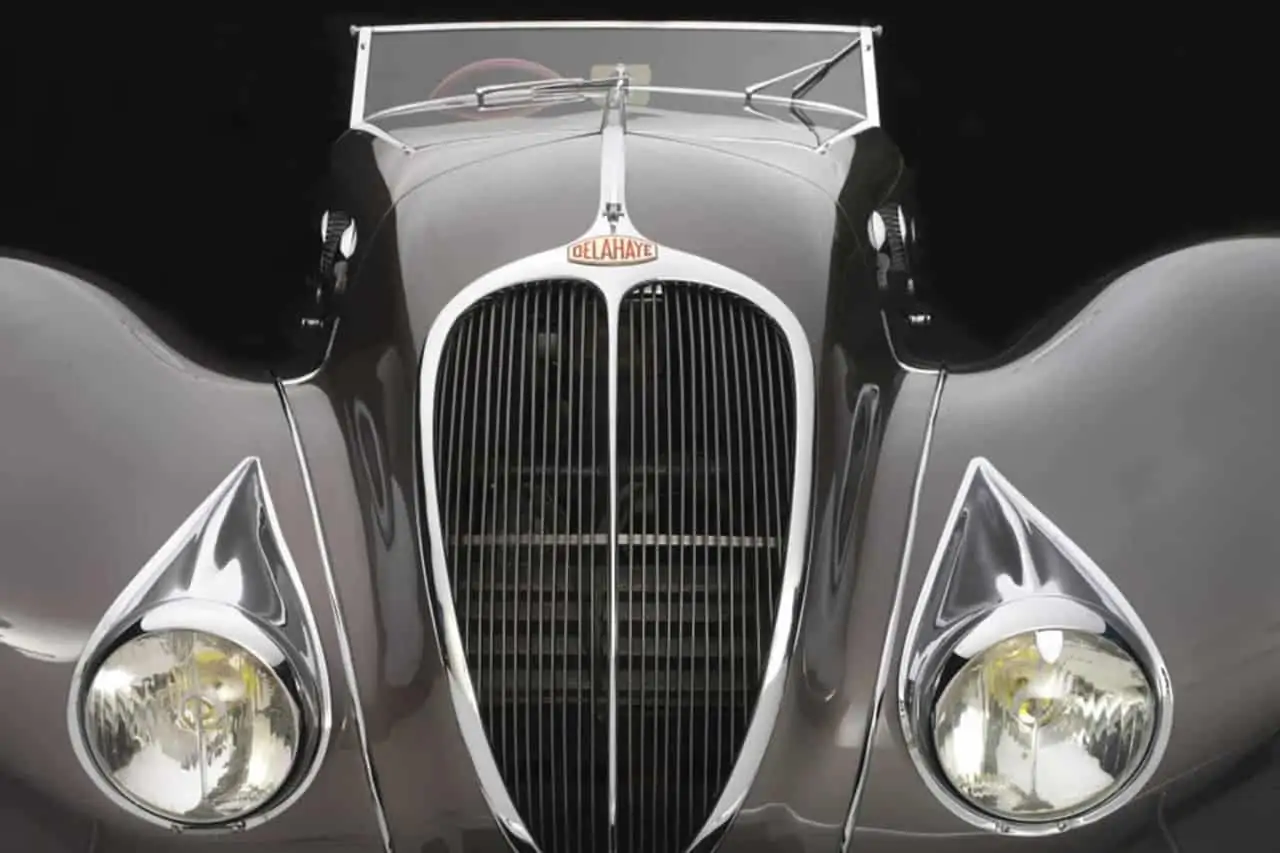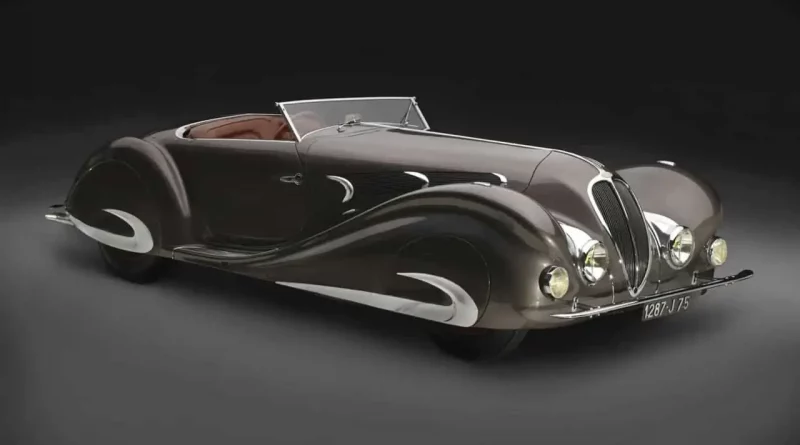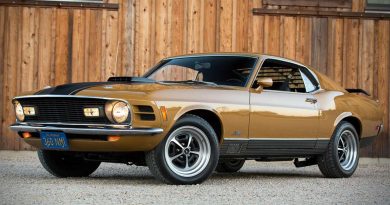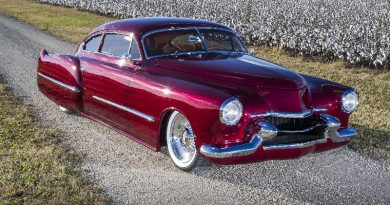1937 Delahaye Type 135 Competition Court Roadster
By mid-1930, even as the Great Depression subsided in Europe, war clouds darkened the horizon. Despite the uncertainty, a few wealthy and optimistic socialites, with money to burn, ordered lavish, bespoke cars with sleek, streamlined coachwork. Expensive then and priceless now, these fantasy-borne confections are considered art-deco rolling sculpture. Their creators, Italian-born émigrés Joseph Figoni and his business partner, Ovidio Falaschi, were shining stars amidst a coterie of Parisian custom coachbuilders whose handiwork has withstood the test of time.
Many of these stunning cars would be shown at posh Concours d’Elegance events in the Bois du Boulogne and other tony venues. The coachbuilders (carrossiers) often collaborated with premier couturiers like Coco Chanel and Jeanne Lanvin, who would create a smashing ensemble to be worn by a lady who’d present the car, in the hope of receiving an award.
In 1936, at the annual Paris Salon, Delahaye displayed a swoopy 135M roadster, by Carrosserie Figoni & Falaschi. Admired by a notorious playboy, Prince Ali Salman Aga Khan, who loved fast, flashy cars and equally attractive women, it was purchased right from the show stand. The Aga Khan, as he was known, was married at the time to the American film star, Rita Hayworth.

Apparently given a new engine, just carrying the original number, the Delahaye would set off across the Atlantic in 1939 for North America. There is some suggestion that this particular chassis made an appearance at the World’s Fair and that Bob Grier, the photographer and motoring enthusiast, would purchase the car about the same time. Unfortunately, the war would hinder Grier from being able to enjoy the car. When the war came to an end though, Grier would take to the wheel and would use the performance of the 3.557-liter six-cylinder engine, 160 hp at 4200 rpm, to take part in a number of hillclimbs. Apparently, the car would be seen with its color scheme reversed.

The design for the Torpedo Roadster that clothes the chassis is based on the famed 1936 Paris Auto Show car. Its form has traditionally been recognized as a collaboration between Figoni and the illustrator Georges Hamel, or “Geo Ham,” who remains widely recognized for his depictions of airplanes and automobiles in racing posters of the period. Although credit has long been given to Figoni and Ham, recent debate indicates that its roots lay in a design penned and published in 1934 by designer Alexis de Sakhnoffsky. In any case, the Paris Auto Show car of 1936, constructed by Figoni et Falaschi with the input of Geo Ham, was the first of what would become a series of 13 streamlined bodies.
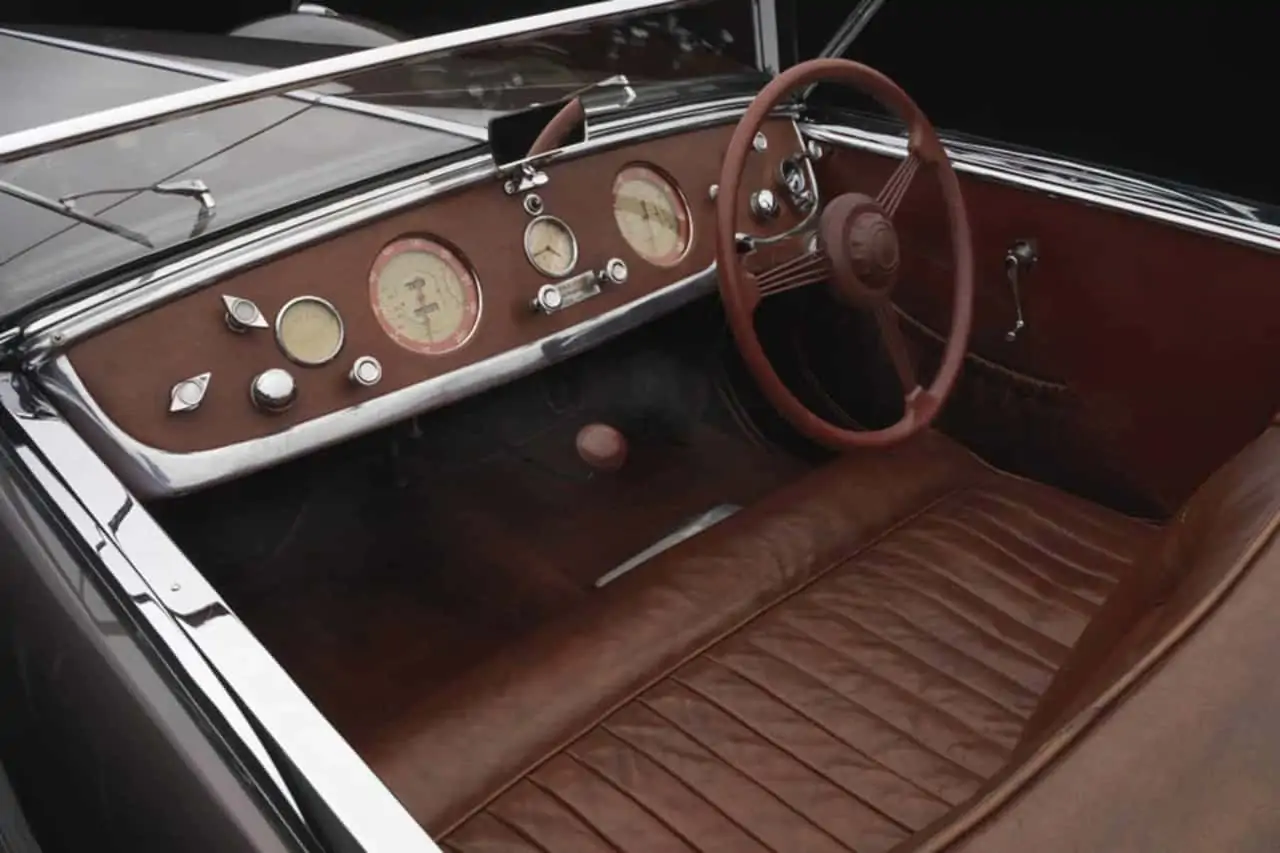
“No, this car is for an owner who views driving as a theatrical performance, adopting the proper air of bored insouciance at a red-light while being ogled by drivers and pedestrians alike. One needs to be the master of superior forms of repartee. So, while the Figoni et Falaschi Delahaye won’t necessarily make you a better driver, it will sharpen your badinage no end.”
